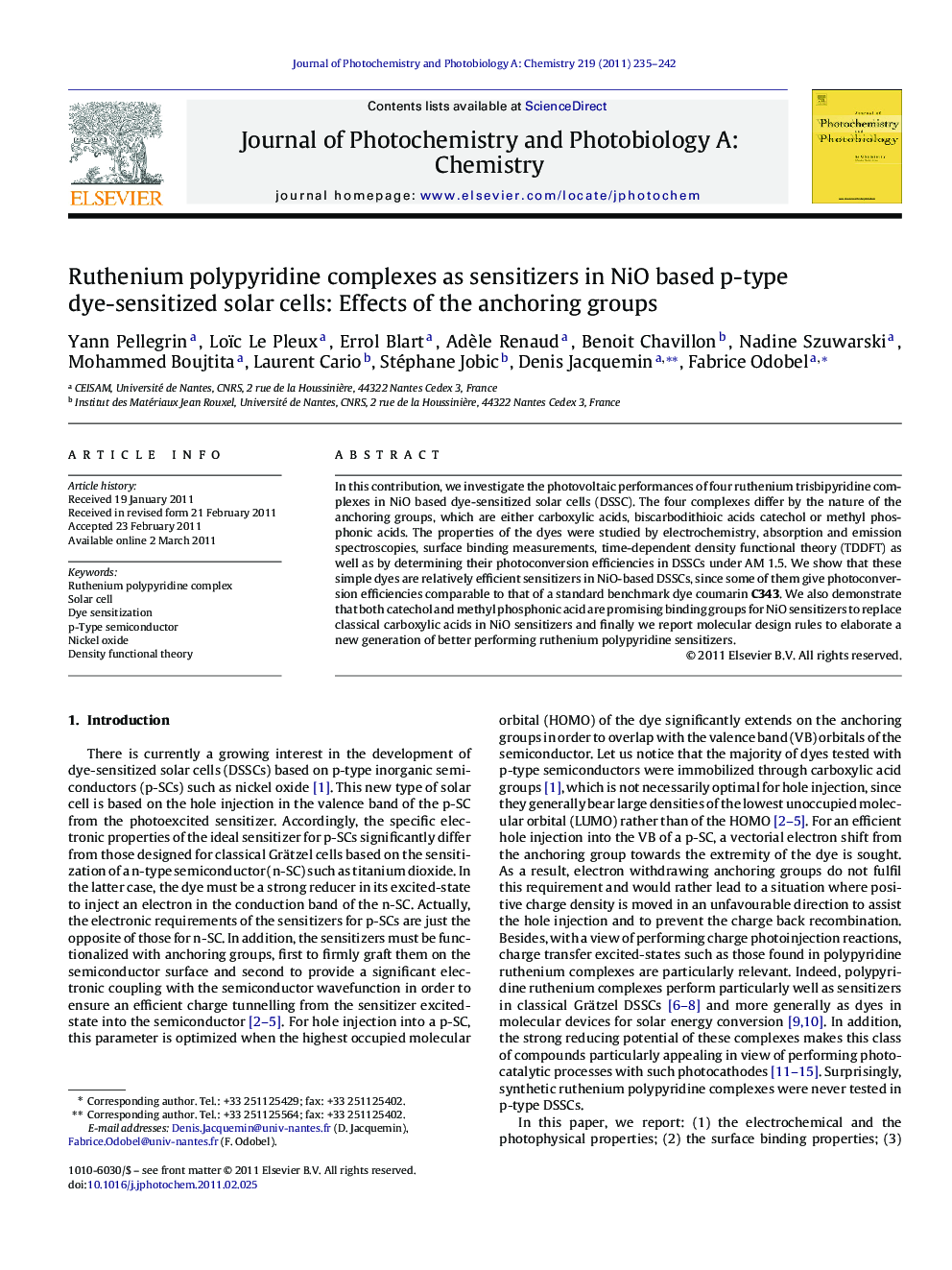| Article ID | Journal | Published Year | Pages | File Type |
|---|---|---|---|---|
| 27464 | Journal of Photochemistry and Photobiology A: Chemistry | 2011 | 8 Pages |
In this contribution, we investigate the photovoltaic performances of four ruthenium trisbipyridine complexes in NiO based dye-sensitized solar cells (DSSC). The four complexes differ by the nature of the anchoring groups, which are either carboxylic acids, biscarbodithioic acids catechol or methyl phosphonic acids. The properties of the dyes were studied by electrochemistry, absorption and emission spectroscopies, surface binding measurements, time-dependent density functional theory (TDDFT) as well as by determining their photoconversion efficiencies in DSSCs under AM 1.5. We show that these simple dyes are relatively efficient sensitizers in NiO-based DSSCs, since some of them give photoconversion efficiencies comparable to that of a standard benchmark dye coumarin C343. We also demonstrate that both catechol and methyl phosphonic acid are promising binding groups for NiO sensitizers to replace classical carboxylic acids in NiO sensitizers and finally we report molecular design rules to elaborate a new generation of better performing ruthenium polypyridine sensitizers.
Graphical abstractRuthenium polypyridine complexes show promising potential as sensitizer in NiO-based dye-sensitized solar cells.Figure optionsDownload full-size imageDownload as PowerPoint slideHighlights► Four ruthenium trisbipyridine complexes were tested in NiO based edye-sensitized solar cells. ► Four different anchoring groups (carboxylic acids, biscarbodithioic acids, catechol and methyl phosphonic acids) were used to chimisorbe the dye on NiO. ► We show that ruthenium polypyridine complexes show promising potential as sensitizer in NiO-based dye-sensitized solar cells. ► Catechol and methyl phosphonic acid can replace the classical carboxylic acid anchoring group.
